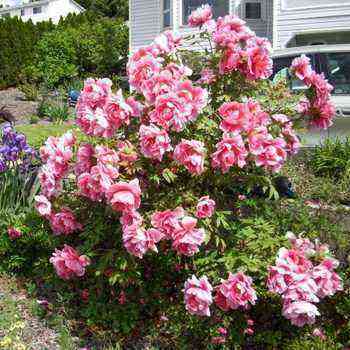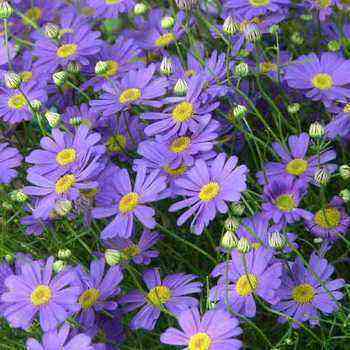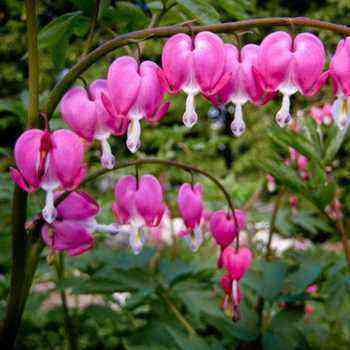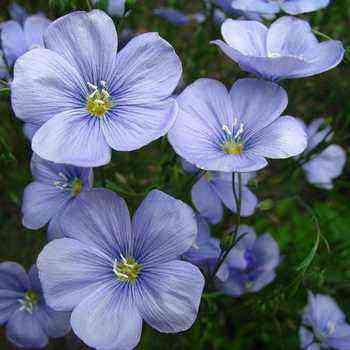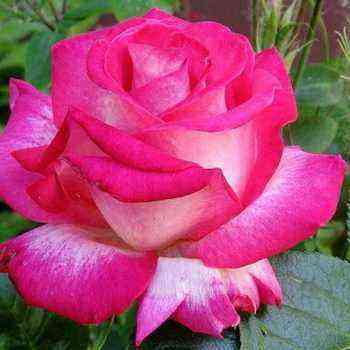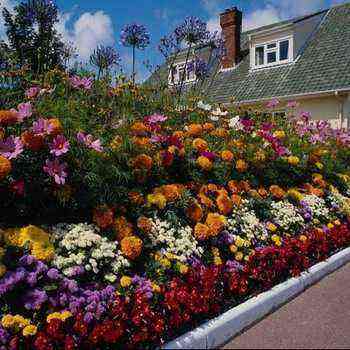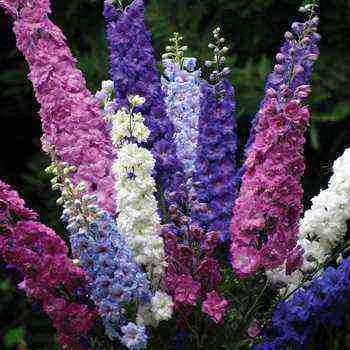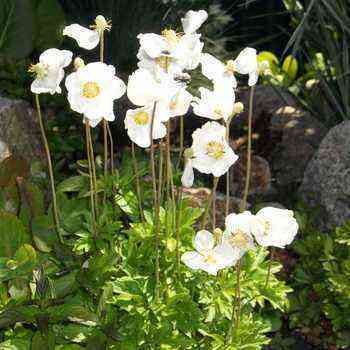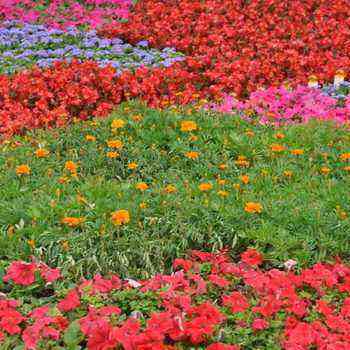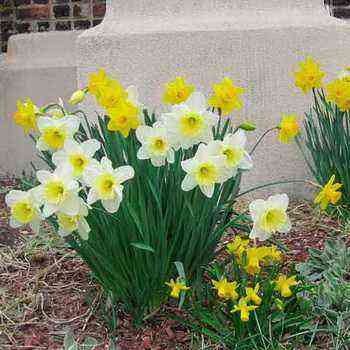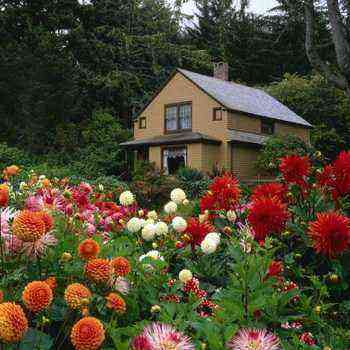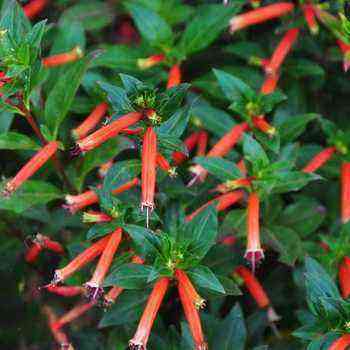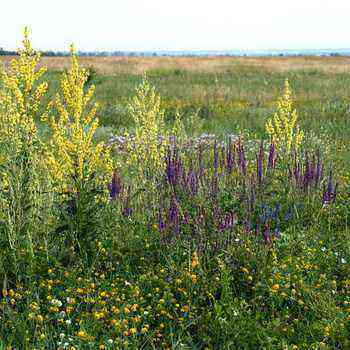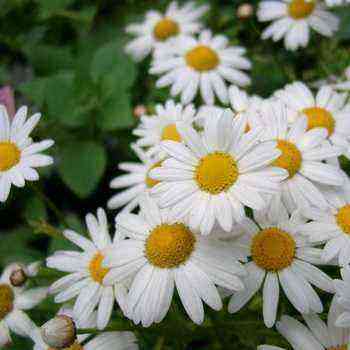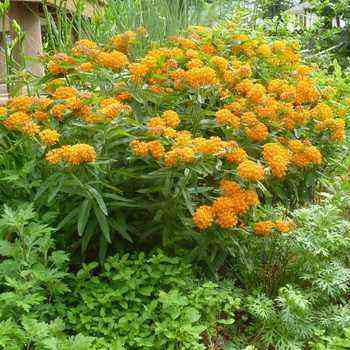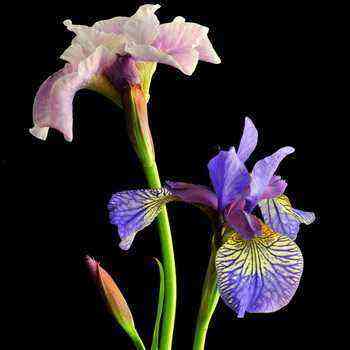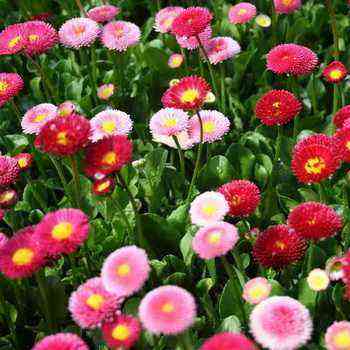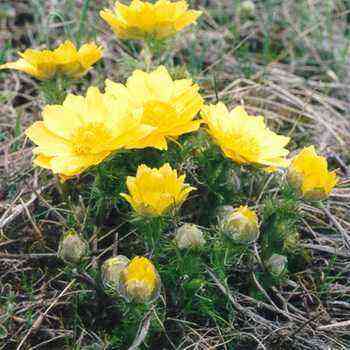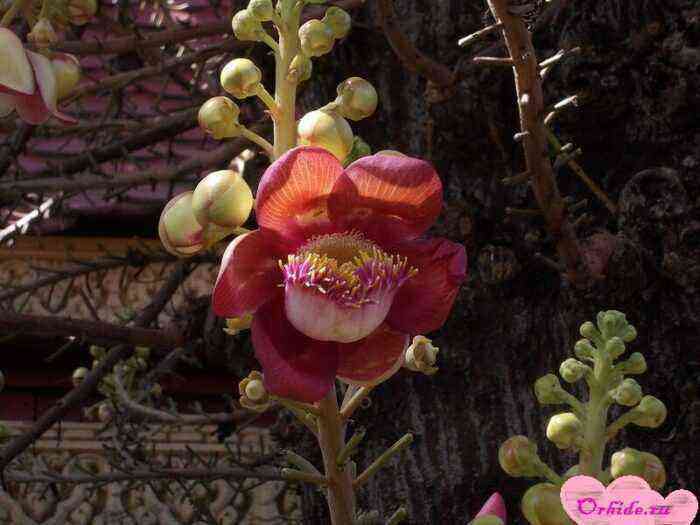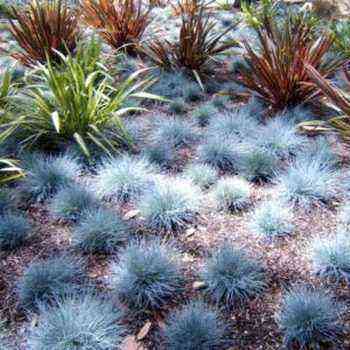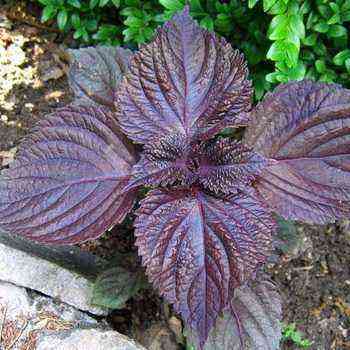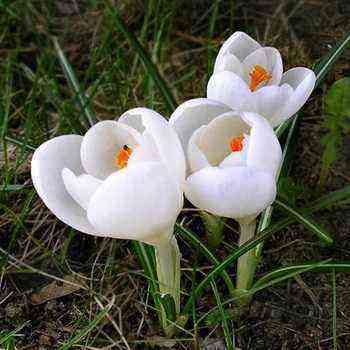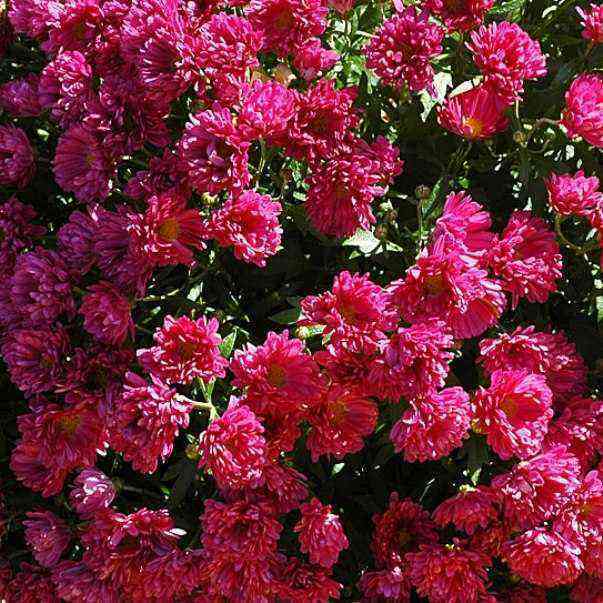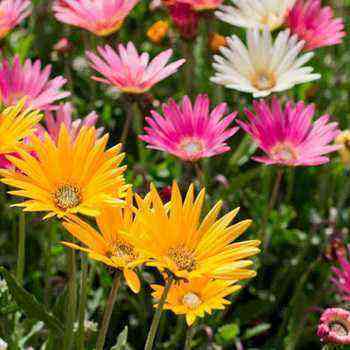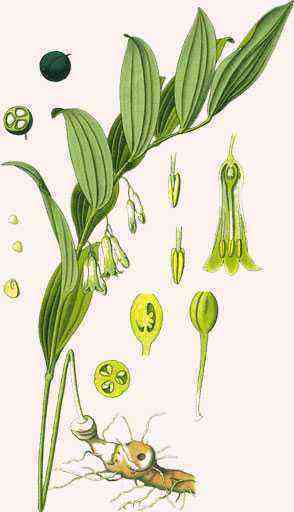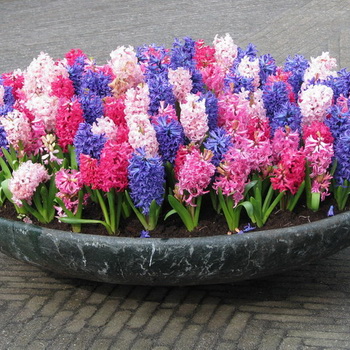 Rare primroses are comparable in beauty and originality to perennial hyacinths – these “curly” inflorescences on strong, though not tall peduncles are good both for individual forcing and in groups. The number of legends about the hyacinth flower can be envied by most plants, because this culture was named after the son of the king of Sparta, and who, if not the ancient Greeks, were famous for writing the most beautiful myths! You will receive a description of the flowers of hyacinths of the most revered varieties, as well as detailed recommendations for their cultivation, in this material.
Rare primroses are comparable in beauty and originality to perennial hyacinths – these “curly” inflorescences on strong, though not tall peduncles are good both for individual forcing and in groups. The number of legends about the hyacinth flower can be envied by most plants, because this culture was named after the son of the king of Sparta, and who, if not the ancient Greeks, were famous for writing the most beautiful myths! You will receive a description of the flowers of hyacinths of the most revered varieties, as well as detailed recommendations for their cultivation, in this material.
The legend of hyacinth and what a flower looks like (with photo)
Already in ancient times, people admired the porcelain inflorescences of hyacinth, composed legends about it. Translated from Greek “hyacinth” means “rain flower”. The Greeks also considered it a flower of sorrow in memory of Hyacinth. The young son of the Spartan king, Hyacinth, overshadowed the beauty and dexterity of the Olympic gods. The young man was patronized by Apollo and Zephyr, the god of the south wind. They often descended from Olympus to a beautiful youth and spent time with him, having fun with hunting or sports. Once Apollo and Hyacinth began to throw a disc. Higher and higher, a bronze projectile flew up, but it was impossible to determine the winner – Hyacinth was in no way inferior to God. With the last of his strength, Apollo threw the disc under the very clouds. Zephyr, fearing the defeat of his friend, blew so hard that the disk changed its direction of flight and unexpectedly hit Hyacinth in the face. The wound was fatal. The death of the young man saddened Apollo immensely, and he turned drops of his blood into beautiful flowers. In ancient Greece, there was even a cult of Hyacinth, which later was you
crowded with the cult of Apollo. Hyacinth was considered a symbol of a dying and reborn nature.
To begin with, a general characteristic of what a hyacinth flower looks like – a perennial tuberous plant of the lily family. Fragrant flowers resemble bells in shape with six bent petals. They are collected in a racemose inflorescence, which can contain from 12 to 45 flowers. There are varieties with double flowers.
As you can see in the photo of flowers, hyacinths come in a wide variety of colors – blue, lilac, pink, red, white, yellow and orange:
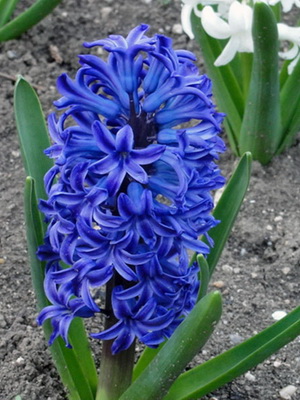

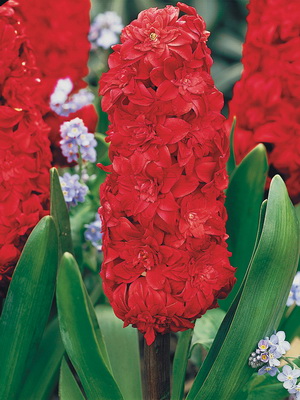
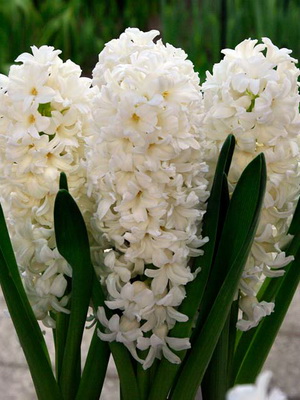


Peduncle leafless, erect, 15 to 45 cm high. Broad-linear leaves 25-30 cm long are collected in a basal rosette. The spherical bulb consists of 15-20 juicy storage scales, tightly adjacent to each other. They are located on a shortened stem – the bottom. Outside, the bulb is covered with dry covering scales. There is a definite relationship between the color of flowers and bulbs. For example, varieties with blue, blue and purple flowers usually have bulbs with purple outer scales. In white-flowered hyacinths, bulbs with light gray integumentary scales, in red-flowered hyacinths – with dark cherry. Plants with yellow flowers have grayish-cream bulbs, while those with pink flowers are lilac.

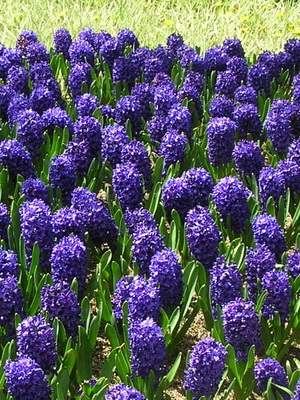
The most widespread are Dutch hyacinth hyacinth hybrids. They are characterized by dense inflorescences of various colors – from white to intensely purple. Peduncle 25-30 cm high. Suitable for group plantings in flower beds or in containers.
Dutch hybrids are distinguished by color and flowering time.
A group of Roman hyacinths is also distinguished. They have smaller and loosely sitting on a short peduncle (15 cm high) white, pink or blue flowers. Mainly used for forcing.
Multiflorous hyacinths emit several peduncles, the flowers are loose and have a white, pink or blue color. They are suitable for forcing and outdoor cultivation. Multiflorous hyacinths, like Roman hyacinths, bloom earlier than Dutch hyacinths.
The last group is miniature hyacinths, or tsintella. They are represented by miniature (12-15 cm high) forms of popular varieties of Dutch hybrids such as Delft Blue, Jan Bose, Lady Derby, City of Harlem, Lord Balfour.
Popular varieties of blue and lilac hyacinths
Blue varieties of hyacinths:
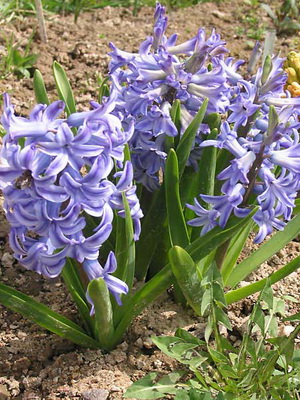

“Bismarck”. The flowers are pale purple with a darker longitudinal stripe, large – up to 4 cm in diameter, on long (up to 2.5 cm) pedicels. The inflorescence is shirokokonicheskoe 12 cm high and 9 cm in diameter. In the inflorescence 20-25 flowers. This one of the most popular varieties of hyacinths has a cetonos up to 25 cm in height. One of the best varieties for outdoor use. Early flowering. Suitable for early distillation.

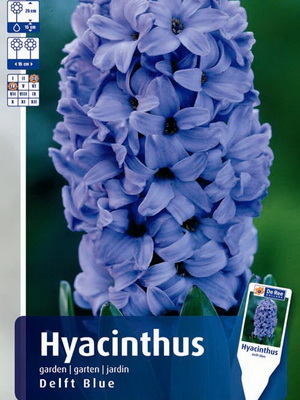
Delft Blue. The flowers are blue, large – up to 4 cm in diameter. The inflorescence is dense, wide, 10-12 cm high and up to 9 cm in diameter. There are 25-37 flowers in the inflorescence. The height of the peduncle of this variety of hyacinths is up to 25 cm. Recommended for landscaping, cutting, forcing.
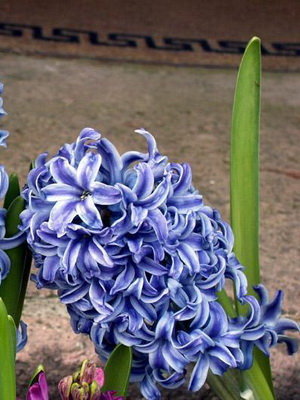
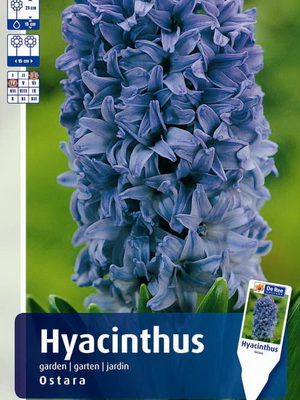
Ostara. The flowers are blue with a subtle darker stripe. Peduncle height 20-24 cm. The inflorescence is dense, 12 cm high and 5 cm in diameter. Early flowering universal variety.
Look at the photo of what blue hyacinths look like:
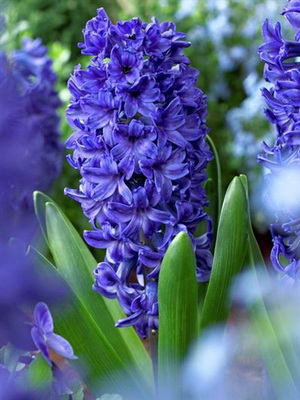

Lilac varieties of hyacinths:
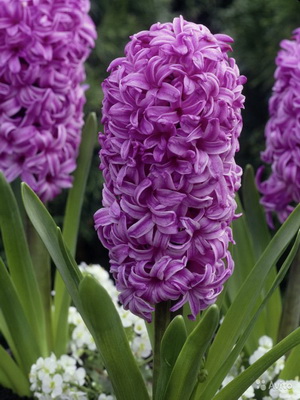

“Amethyst”. The flowers are lilac, more intensely colored at the edges, large, up to 4 cm in diameter. The inflorescence is dense, up to 15 cm high and up to 8 cm in diameter, consists of 25-30 flowers. Peduncle height up to 24 cm. Medium late. Very good for soil planting and cut, can be used for medium forcing.

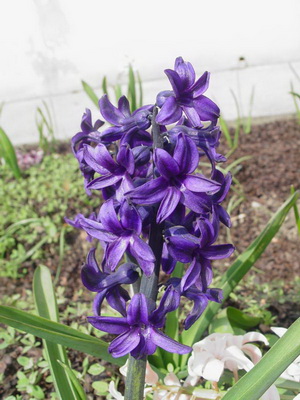
Lord Balfour. The flowers are lilac with a dark lilac pronounced longitudinal stripe, along the edges of the flowers are darker in color. The diameter of the flowers is up to 4 cm. The inflorescence is cylindrical, 12 cm high and up to 7 cm in diameter, consists of 20 flowers. Peduncle up to 24 cm high. Early flowering. In the group of lilac varieties, it is considered the best. Suitable for open field, cutting and early forcing.
White and pink varieties of hyacinth flowers (with photo)
White varieties of hyacinths:

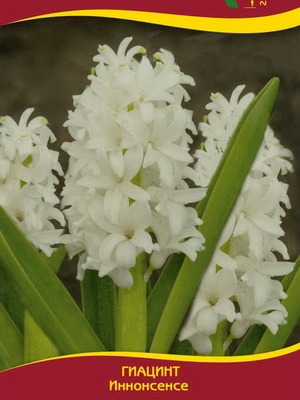
Innosans. The flowers are snow-white, up to 4 cm in diameter, the petals are open, wide. The inflorescence consists of 20-25 flowers, cylindrical, up to 12 cm high and up to 7 cm in diameter. Peduncle up to 25 cm high. Early flowering. One of the most popular versatile varieties: used for open field, early forcing and pruning.
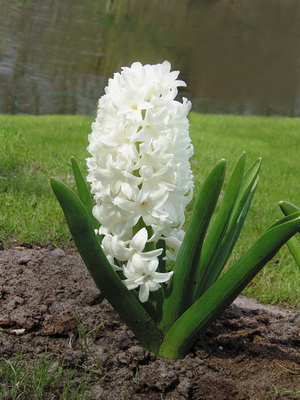
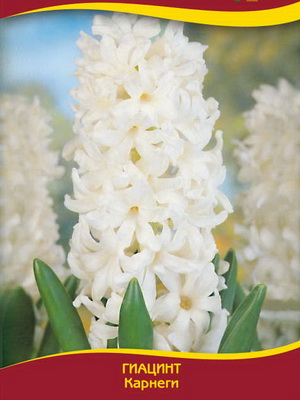
Carnegie. The flowers are white, up to 4 cm in diameter, collected in a dense cylindrical inflorescence, 10 cm high and 5 cm in diameter. The number of flowers in the inflorescence is 20-25. The height of the peduncle is up to 22 cm. Medium flowering. One of the best varieties for outdoor cultivation, cutting and forcing.
Here you can see photos of white hyacinths, which are distinguished by their special beauty:

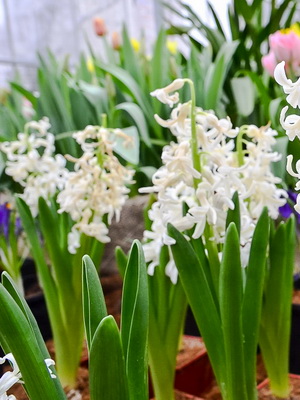
Pink varieties of hyacinths:

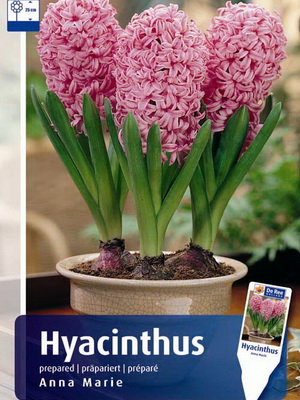
Anna Marie. The flowers are pink with a darker longitudinal stripe. The inflorescence consists of 30-35 flowers. Peduncle height up to 25 cm. Early flowering. This pink hyacinth flower is recommended for potting and early forcing.
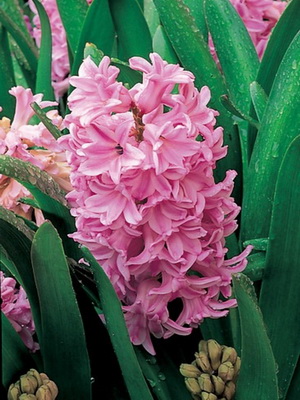
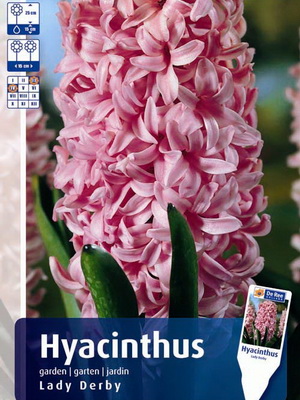
“Lady Derby”. The flowers are light pink, matte, with a darker stripe, 3-4 cm in diameter.
Pay attention to the photo – this pink hyacinth has 23-25 cylindrical flowers in the inflorescence:
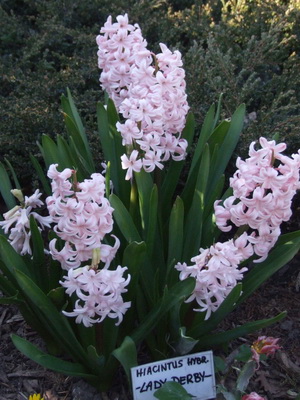

Plant height 11 cm and a diameter of 5 cm. Peduncle up to 22 cm high. Average flowering period. Used for open field, cutting and forcing.
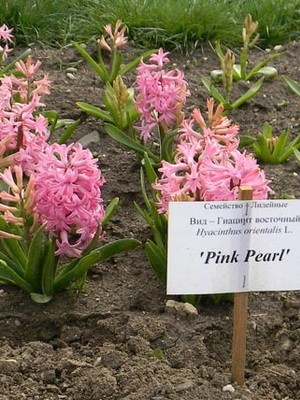
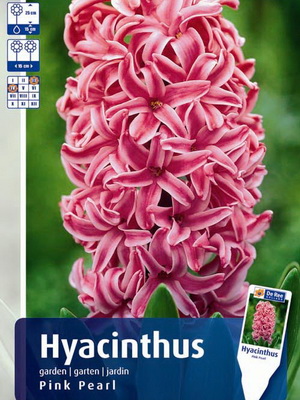
Pink Pearl. The flowers are intensely pink with a darker longitudinal stripe. The inflorescence consists of 20-22 flowers. Peduncle up to 23 cm high. Medium early flowering period. Used in landscaping, for cutting and early forcing.
Red, yellow and orange varieties of hyacinths
Red varieties of hyacinths:
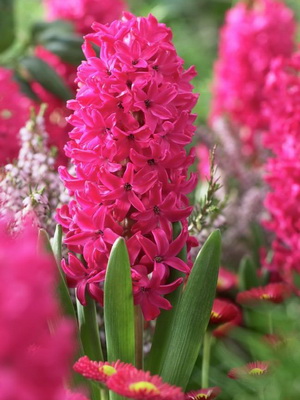
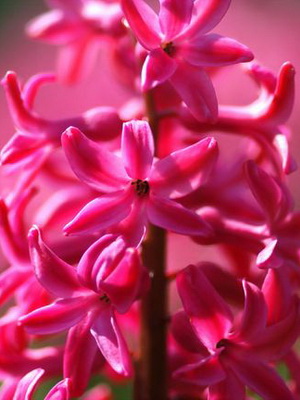
La Victoire. The flowers are crimson-pink, with shine. The height of the flower arrow is up to 25 cm. Mid-early. Recommended for early forcing, soil planting and pruning.
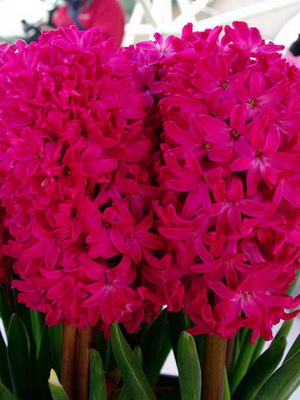
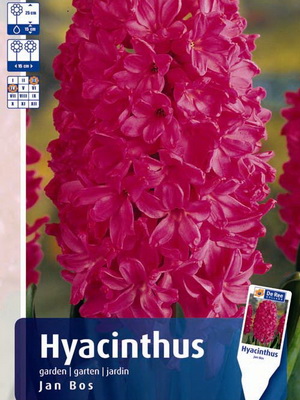
Jan Bose. Flowers up to 3 cm in diameter, bright magenta-red color, lighter along the edges, with a whitish pharynx. In the inflorescence of 25-30 flowers. It is dense, small, round-conical, up to 10 cm high and up to 5.5 cm in diameter. Peduncle 16-18 cm high. Early flowering. The appearance of a second inflorescence is characteristic, which increases the duration of flowering. Very good for early distillation.
Yellow and orange varieties of hyacinths:
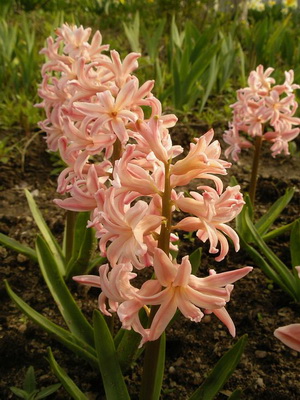
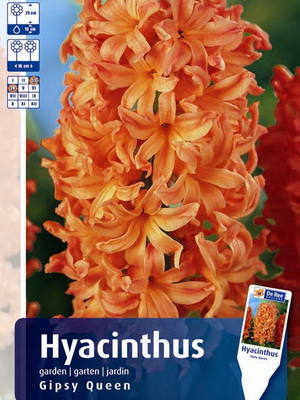
Gypsy Queen. The flowers are orange, collected in a dense inflorescence (of 20-25 flowers) of a cylindrical shape. Peduncle up to 22 cm. Medium blooming. Used for outdoor cultivation and forcing.
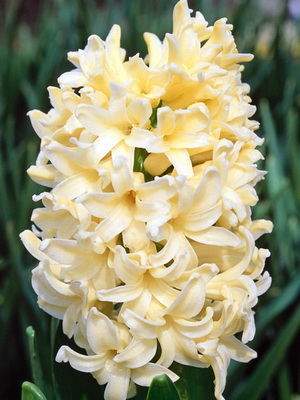
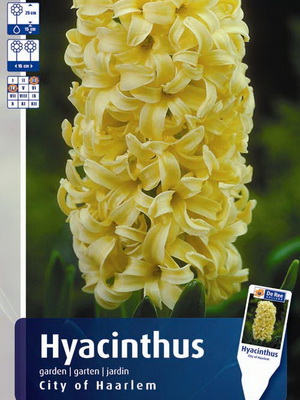
City of Harlem. The flowers are light yellow, by the end of flowering they are pale cream. The inflorescence is dense, cylindrical, and consists of 20-25 flowers. Peduncle 25-27 cm high. The average flowering period. Recommended for flower decoration in the ground, forcing and cutting.
Below are photos of the varieties of hyacinths most often grown in personal plots:
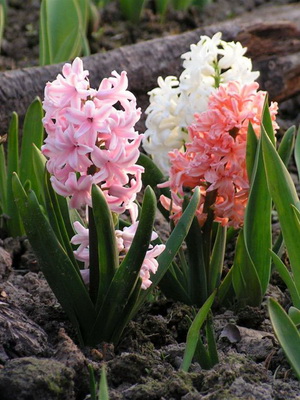
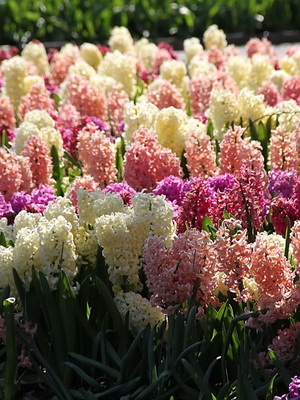
Conditions for growing hyacinths in the open field: planting and care
For planting hyacinths in open ground, flat areas with good drainage and low groundwater standing are chosen, since even a slight stagnation of water can lead to disease and death of the bulbs. These plants are early flowering plants, so they can be planted between trees and shrubs. To create ideal growing conditions for hyacinths in the southern regions, it is recommended to provide a little shade during the midday hours, because in the bright sun the plants fade faster, and some varieties can also discolor.
For growing hyacinths in the open field, cultivated light sandy loam soils rich in humus with a neutral reaction are most suitable. Loamy soils are improved by adding humus and sand, and acidic soils are necessarily lime. Before planting flowers, hyacinths begin to prepare the soil for 1.5-2 months. A bucket of humus, 100 g of ash, 60 g of superphosphate and 30 g of potassium sulfate are added to 1 m2, you can use a combined fertilizer (25-30 g). Then the soil is dug to a depth of 30-40 cm.

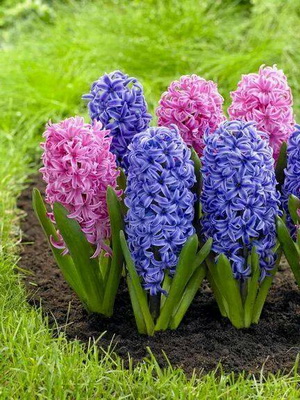
Most growers grow hyacinths on ridges 15-20 cm high and 1-1.2 m wide, which protects the bulbs from decay in rainy weather. Every 20 cm, transverse grooves are made with a depth of 20 cm, coarse sand with ash is poured onto the bottom of them to improve drainage and protect the bottom from decay. Stir large onions every 12-15 cm to a depth of 15-20 cm and cover with a mixture of sand, ash and earth. Small bulbs and the baby are planted at a distance of 5-6 cm from each other to a depth of 5-8 cm. After planting, the ridges are mulched.
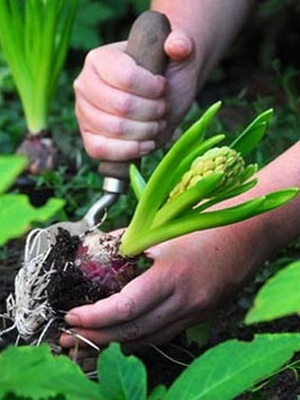
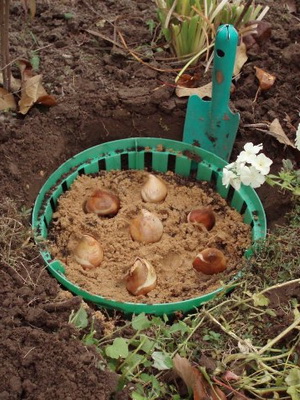
The bulbs are planted in autumn when the soil temperature reaches 8-9 ° C. This soil temperature and sufficient moisture are necessary for good rooting. In the middle lane, bulbs are usually planted in the second half of September, and in more southern regions in October. After planting hyacinths when caring for bulbs in the open field, after 2-3 weeks, when the plants take root, you can give a liquid fertilizing with a complex mineral fertilizer (20 g / m2). With the onset of frost, the plantings are covered with foliage or spruce branches with a layer of 10-15 cm. When the snow falls, the ridges are covered with snow. When growing hyacinth flowers, it is recommended to change the planting site annually. Hyacinths are returned to their original place after 5-6 years.
How to care for hyacinths: feeding and watering
Now it’s time to learn how to care for hyacinth flowers during the growing season. There is nothing difficult here: you need to remove the shelter immediately after the snow melts, regularly loosen, weed, discard diseased plants, water and apply fertilizers. Although hyacinths come from warm countries, their resistance to cold during spring development is surprising. They emerge from under the snow in early spring already with buds. They can tolerate frosts down to -10 ° C. Plants are insensitive to sharp daily temperature fluctuations.
During the growing season, feeding hyacinths is carried out three times: the first feeding with nitrogen fertilizer is especially important – 15 g per bucket of water per 1 m2. It is carried out when the plants reach a height of 5-6 cm. The second feeding – during the budding period at the rate of 20-25 g of complex fertilizer per 1 m2. Plants respond well to feeding with infusion of bird droppings or enzymatic herbal liquid. For the third time, hyacinths are fed at the end of flowering – superphosphate and potassium sulfate, 20-25 g per 1 m2. Nitrogen is not included in the third feeding. Wood ash can be added with superphosphate.

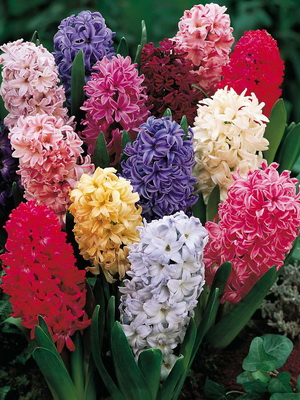
Since hyacinths are salt-tolerant plants, some growers are limited to one feeding in the budding phase: 70-80 g of complete mineral fertilizer per 1 m2. It is better to use a nitroammophoska containing equal amounts of nitrogen, phosphorus and potassium.
In the process of caring for hyacinths, do not forget to water them. In dry weather, irrigation is required every 2-3 days. Hyacinths are especially demanding for moisture during flowering. Watering continues at the end of flowering – until the leaves begin to turn yellow.
Bulb propagation of hyacinths (with video)
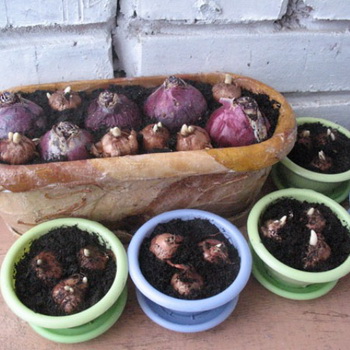 The bulbs of hyacinths should be dug up annually, since a certain amount of temperatures is required to lay the inflorescence of the next year. If the bulbs are left in the ground, then next year the buds will be small, green, underdeveloped. In the south of Russia, the digging is carried out in mid-June, in the middle lane – in the second half of July, when the leaves begin to turn yellow and dry, but have not yet separated from the bulb. The dug out bulbs are dried for 2-3 days in the shade in the open air. Then the earth is shaken off them, carefully cleaned of roots, remnants of leaves and peduncles, the sick and damaged are discarded. Before planting, the bulbs are stored at a temperature of 20-25 ° C.
The bulbs of hyacinths should be dug up annually, since a certain amount of temperatures is required to lay the inflorescence of the next year. If the bulbs are left in the ground, then next year the buds will be small, green, underdeveloped. In the south of Russia, the digging is carried out in mid-June, in the middle lane – in the second half of July, when the leaves begin to turn yellow and dry, but have not yet separated from the bulb. The dug out bulbs are dried for 2-3 days in the shade in the open air. Then the earth is shaken off them, carefully cleaned of roots, remnants of leaves and peduncles, the sick and damaged are discarded. Before planting, the bulbs are stored at a temperature of 20-25 ° C.
The main method of reproduction of hyacinths, like most bulbous ones, is vegetative (by daughter bulbs-children), and propagation by seeds is used for breeding purposes. But the coefficient of natural reproduction in hyacinths is low. During one growing season, 1 – 3 babies are usually obtained from a large bulb (depending on the variety), and bulbs with a diameter of less than 5 cm do not form a baby at all. This prevents the widespread distribution of hyacinths in culture.
The propagation of hyacinths by bulbs is carried out in the fall, and after rooting, top dressing is applied to the soil.
Back in the 18th century. Dutch flower growers noticed that bulbs with a bottom damaged by mice form a large number of small daughter bulbs. Since then, cutting out the bottom (partial, and then complete) began to be used for the accelerated reproduction of hyacinths.
There are many ways of artificial propagation of hyacinths: cruciform and ring cuts of the bottom, complete cutting of the bottom, isolation of the central kidney, obtaining babies from individual scales and even from leaf blades, warming the bulbs.

